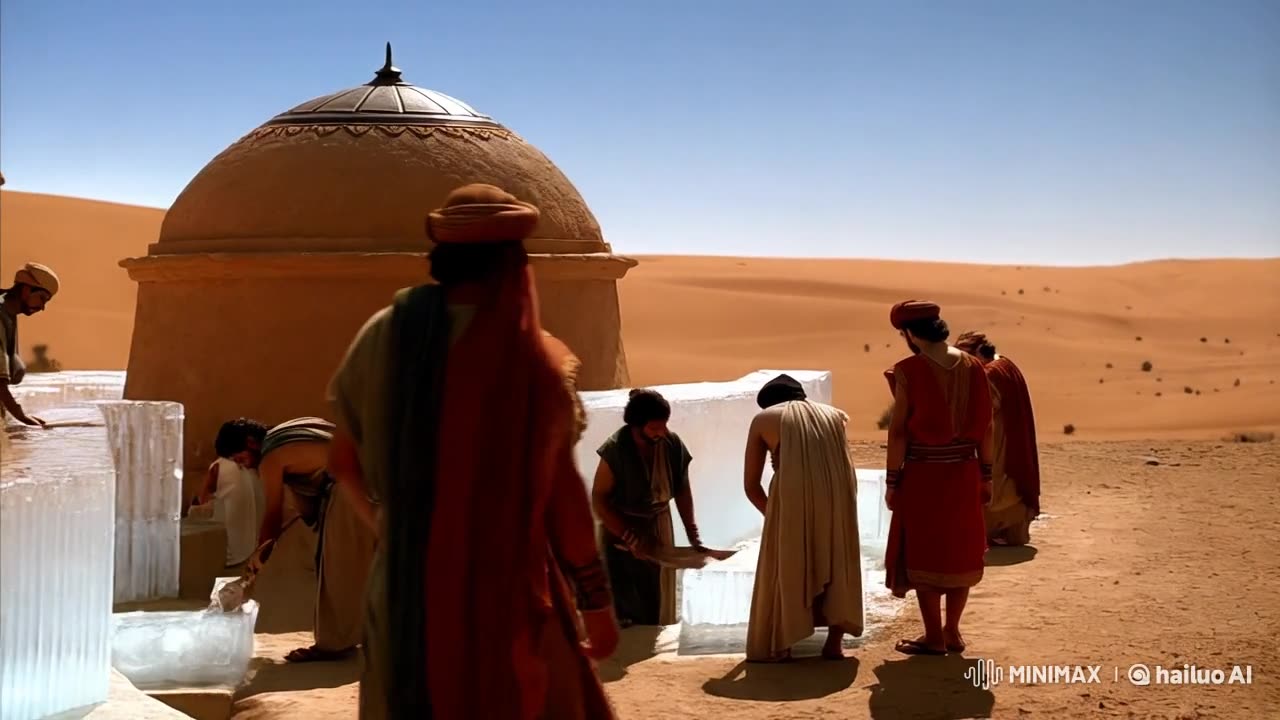Premium Only Content

Over 2,400 years ago, the Persians ingeniously
These domed structures, with thick walls of brick and clay, kept the interiors cool year-round. In winter, water from nearby rivers or snowmelt was channeled into the Yakhchal, where the freezing desert nights turned it into ice. Stored in the pit's lowest part, the ice remained frozen for months. During the hot summers, they used this ice to cool drinks, store food, and for medical purposes—a remarkable use of natural resources and ancient engineering
That's correct! The Persians were renowned for their innovative engineering, and the Yakhchal was a testament to their ingenuity.
Here's a brief overview of how the Yakhchal worked:
Construction: Yakhchals were typically constructed underground, often with a dome-shaped roof made of mud-brick. They were usually located in a cool, shaded area, often near a source of water.
Ice Collection: During the winter months, when natural ice was available, workers would collect it from nearby mountains or ponds and store it in the Yakhchal.
Insulation: The thick walls of the Yakhchal, combined with the underground location and the use of insulating materials like straw or camel dung, helped to keep the ice frozen throughout the year.
Cooling: To cool food or beverages, people would place them in containers that were then submerged in a pool of water that was chilled by the ice stored in the Yakhchal.
The Yakhchal was a remarkable example of Persian engineering and a testament to their ability to adapt to their environment. It allowed them to enjoy the luxury of cold drinks and food even in the harsh desert climate.
-
 4:36
4:36
BIG NEM
7 hours agoThe Sad Truth About How Our Cannabis is Grown
6.14K4 -
 3:07:08
3:07:08
Price of Reason
12 hours agoMainstream Media FEARS Extinction! Gladiator 2 Review! New DnD SCANDAL!
48.2K7 -
 LIVE
LIVE
Fresh and Fit
8 hours agoIsrael-Hezbollah Ceasefire & Reacting To Death Threats On X
5,242 watching -
 1:11:10
1:11:10
Steve-O's Wild Ride! Podcast
5 days ago $9.14 earnedDusty Slay Went From Selling Pesticides To Having A Netflix Special - Wild Ride #244
32.9K3 -
 1:16:02
1:16:02
CocktailsConsoles
6 hours agoBE PART OF THE GAME!!| Death Road to Canada | Cocktails & Consoles Livestream
23K1 -
 8:19:28
8:19:28
Phyxicx
8 hours agoWe're streaming again! - 11/26/2024
19.6K -
 6:49:31
6:49:31
GamingWithHemp
8 hours agoHanging with Hemp #103
38.7K3 -
 21:24
21:24
DeVory Darkins
1 day ago $10.88 earnedElon Musk and Tucker Carlson SHATTER Left Wing Media
39.2K36 -
 15:13
15:13
Stephen Gardner
5 hours ago🔥Breaking: Trump JUST DID the UNEXPECTED | Tucker Carlson WARNS America!
34.7K74 -
 1:18:01
1:18:01
Glenn Greenwald
10 hours agoWill Trump's Second Term Promote Economic Populism? Matt Stoller On Cabinet Picks To Fight Corporate Power; Should Liberals Cut Off Pro-Trump Friends & Family? | SYSTEM UPDATE #372
175K202